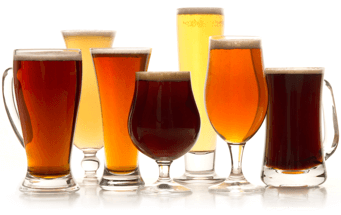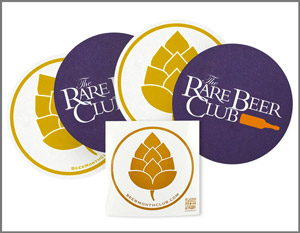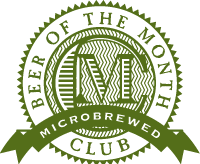Thomas Kember Brewing Company - White Beer
-
ABV:
4.4% -
Int’l Bittering Units (IBUs):
13 -
Serving Temperature:
47-52° F
For more information about the brewery and scheduled tours, call (206) 682-8322 or check out their web site at www.thomaskemper.com.
Whether grilled, broiled, steamed or fried, whitefish is a natural match for crisp, clean lagers of either the Bohemian or German variety. The crispness of the beer, combined with whatever delicacies each individual beer may offer, will provide the perfect complement to the delicate, melt-in-your-mouth qualities of a beautifully cooked fish. Although you should use a lager in the recipe itself, consider serving the meal with a Pilsener, an ale, or this month's featured lager.
3 fresh trout
1 cup Stone Mountain Lager
1 cup dry white wine
½ cup vinegar
1 lemon, half in slices
Wash and clean trout, place in saucepan. Mix beer, wine, vinegar and pour over fish in saucepan. Heat mixture to boil, turn down heat and simmer 10-15 minutes, turning fish over. Remove fish, squeeze lemon over fish, garnish with lemon slices and parsley. Serves 3 persons, 2 persons and 3 cats, 2 persons and one cat with an overactive pituitary gland, or one dog.
Source: Great Cooking with Beer, Jack Erickson, Red Brick Press, 1989.
SECRET LIFE OF BEER - Among the forest tribes of Latin America the practice of exocannibalism, or the eating of one's enemies, was commonly combined with brewing and drinking beer. Legend has it that you couldn't beat the taste of human fingers with a cool skull cup of chicha beer. The Putumayo River tribes ate captives only after an eight-day beer festival where the prisoners, soon to be consumed, were kept drunk until meal time. (next sentence in italics) These guys take the phrase, "marinating your liver" to an entirely new level!
BEER TRIVIA - The concept of the 6-pack was developed over the 4, 8 or 10-pack in the 1930's when major brewing companies determined that six bottles of beer was the maximum number that a woman could carry home from the market at one time.
I was kickin' back in my favorite blues bar, the New Dolphin Inn, last weekend and decided to venture out and try one of several malt liquors that were on hand behind the bar. Several things followed my consumption of a couple of tall boys: I found rhythm and became a dancing machine, my dance partners looked considerably better than they had only hours before, and I woke the next morning (or perhaps early afternoon) feeling as though I'd been beaten up side the head repeatedly with a large, blunt instrument. My question is a simple one. What the hell is a "malt liquor"? Is it different from beer and why don't I ever want to have one again?
Steve Carson
San Juan Capistrano,
CA.
Yo Steve-O!
Good question. There seems to be much confusion with respect to the difference between a malt liquors and malt beverages. To answer your question, I've got to first let you know that the phrase, "malt liquor" is really just another marketing tool used to describe a category of beers that could be described as "fortified Bud". All malt liquors are also malt beverages. In many states, any malted beverage above 4 % alcohol by volume cannot be labeled as "Beer". As what has become to be known as "malt liquor" is not really a stout, porter, ale, or any of the other style descriptors that could be used instead of the word "beer", the phrase malt liquor was developed. Your basic Cobra Malt Liquors and Old English 800s of the world are brewed with more fermentables such as sugars and adjunct grains like rice and corn. Bottom line? Cheaply produced, high octane rocket fuel that would serve you equally as effective and perhaps more kindly the next morning as a rust remover rather than a social lubricant. Bit of trivia on the two above mentioned products: Old English originally got its name as it used to contain 8 % alcohol by volume. Cobra got its name after product research uncovered excessive consumption of the product to serve as an effective repellent towards the obviously highly intelligent reptile.
Woof!
Murl.

Unmatched Variety by style, brewery & country
Choose from Five different Beer Clubs offering unmatched variety by brewery,
country of origin, and beer style to suit your specific tastes.


